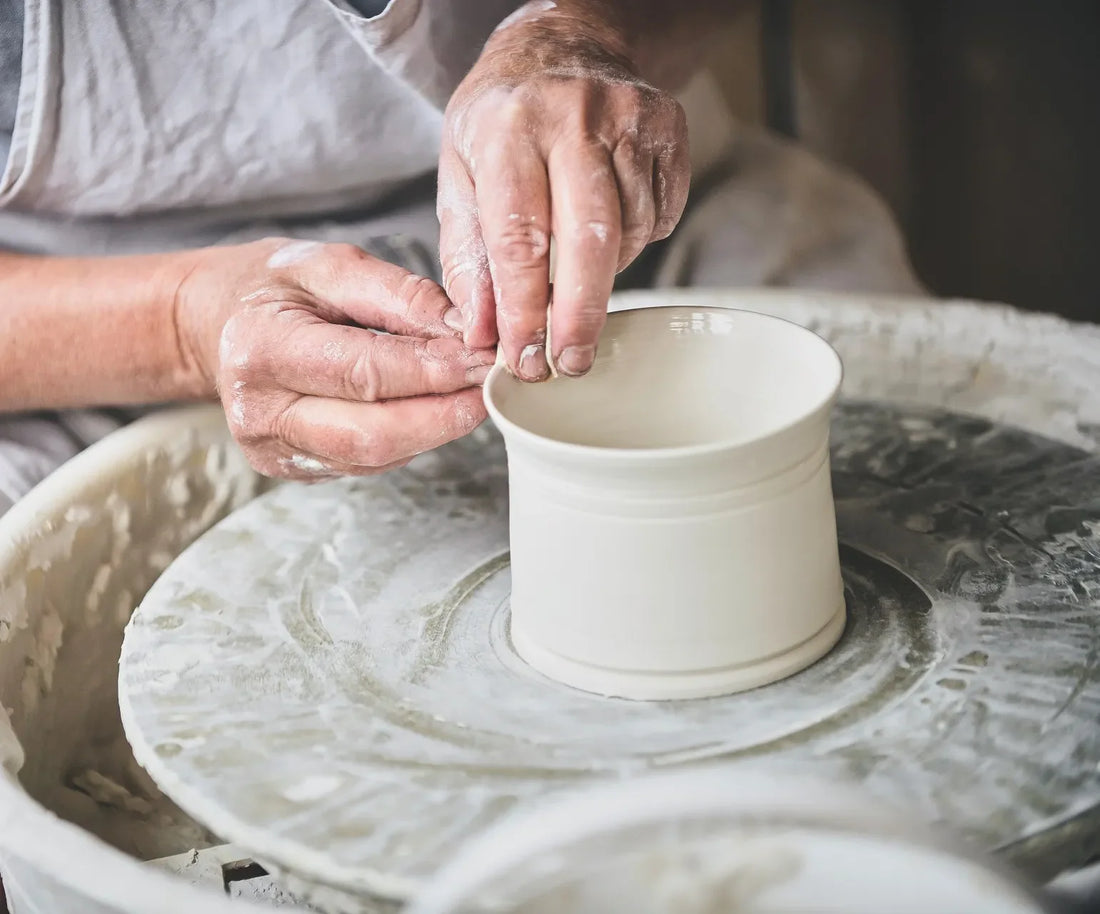
What Is Handmade Ceramic Art? A Journey Into Clay and Creativity
Have you ever felt the unique weight and texture of a handmade ceramic piece? It's a feeling that goes beyond just a functional object; it’s a connection to the artist, the earth, and a story told through clay. Unlike their mass-produced counterparts, each piece of handmade ceramic art is a one-of-a-kind creation, bearing the beautiful, subtle imperfections of human touch. It’s not just a mug or a bowl—it's a small piece of soul, crafted with intention and care.

The Difference Between Handmade and Mass-Produced Ceramics
While big-box stores are filled with identical, flawless ceramic goods, handmade ceramics stand in beautiful contrast. The distinction isn't just about price; it's about value, quality, and soul.
The Human Touch
Think of the small, unique details on a handmade mug: a slightly uneven rim, a subtle fingerprint left by the potter, or a splash of glaze that tells a story. These aren't flaws; they are the marks of authenticity. They ensure that your item is truly yours and no one else’s. Each piece is a testament to the artist's dedication and skill, a tangible connection to their creative process.
Quality and Durability
Artisans who specialize in handmade pottery often use high-quality clay and meticulously fire their pieces at high temperatures. This process results in a durable, long-lasting product. Unlike mass-produced ceramics that can be brittle, a handcrafted piece is made to last, becoming a cherished item that can be passed down through generations.

The Journey of a Ceramic Piece: From Clay to Creation
Every handmade ceramic item begins as a simple lump of raw clay. From there, it embarks on a fascinating journey.
Shaping and Sculpting
The artist uses their hands, a potter’s wheel, or sculpting tools to transform the clay. This is a meditative and intimate process where a vague idea takes a physical form. The care put into this stage determines the piece's final shape and character.
The Firing Process
Once shaped, the piece is allowed to dry completely before its first firing. This bisque firing hardens the clay, preparing it for the next step. The final firing, often at incredibly high temperatures, vitrifies the clay, making it strong, non-porous, and ready for use.
Glazing and Finishing
Glazing is where the magic happens. The artist applies a special liquid glaze that, when fired, melts into a glassy, protective coating. This process not only adds vibrant colors and beautiful patterns but also makes the piece food-safe and easy to clean.

Why Choose Handmade Ceramics for Your Home?
Integrating handmade ceramics into your home decor is about more than just filling a space; it’s about enriching it.
Adding Character and Story
A handmade bowl on your kitchen counter or a ceramic vase on your bookshelf adds a personal touch that a generic item can't. It gives your home a unique narrative, telling a story of artistry and intention.
Supporting Independent Artists
When you buy a handmade ceramic piece, you are not just purchasing an object. You are supporting an individual artist's passion and livelihood. You are contributing to a community of creators and helping to keep a beautiful tradition alive.
A Lasting Legacy
Handmade ceramics are not just temporary trends; they are timeless treasures. They are objects that hold memories, stories, and the legacy of the hands that shaped them. They are meant to be used, loved, and cherished for years to come.
